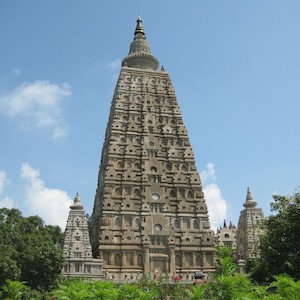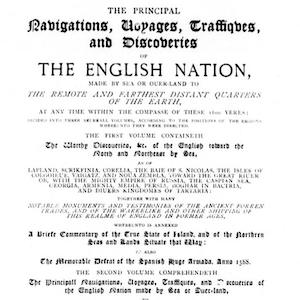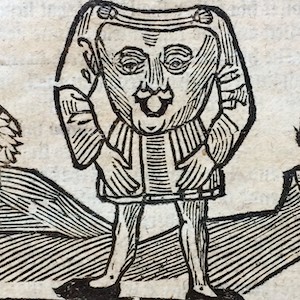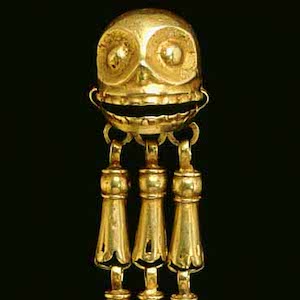Analyzing Travel Records
Overview
In a way, all historical thinking and all historical writing deal with travel accounts. They do not necessarily involve the physical removal of historians’ bodies to distant Image of Aztec Warriorlands, but they require historians to engage with different interests and perspectives in the world of the past, which some scholars have likened to a foreign country. Even one’s own society can seem foreign when a historian explores the changing political, social, economic, cultural, environmental, and technological conditions of earlier ages, not to mention different beliefs, values, and customs of times past. Yet travel accounts representing the observations and experiences of individuals who visited foreign lands constitute a special category of primary source for historians. Travel accounts can be valuable in several ways. They have often provided information about a foreign society that native inhabitants themselves did not supply, either because they did not have a means to do so, or because they did not see fit to record information that they did not recognize as particularly distinctive or interesting. Besides that, particularly talented or reflective travelers have sometimes been able to offer unusual insights into the societies they visited. Of course, travel accounts are not just windows on foreign societies but also mirrors that throw light back on the values of their own authors, who, wittingly or not, have reflected the interests and concerns of their own societies when recording their observations and experiences in foreign lands. Although often convenient and quite useful, travel accounts are by no means entirely transparent or wholly reliable as historical sources. To the contrary, travel accounts are problematic documents that call for careful and critical analysis. This essay will consider the nature of travel accounts, the problems they raise as historical sources, and some recent scholarship on travel writing.
Essay
There are many reasons why individuals have traveled beyond their own societies. Some travelers may have simply desired to satisfy curiosity about the larger world. Until recent times, however, trade, business dealings, diplomacy, political administration, military campaigns, exile, flight from persecution, migration, pilgrimage, missionary efforts, and the quest for economic or educational opportunities were more common inducements for foreign travel than was mere curiosity. In the 20th century, with the development of increasingly fast, reliable, and inexpensive forms of long-distance transport, mass tourism emerged as a major global promoter of foreign travel.
Travel and Travel Accounts in World History
Records of foreign travel appeared soon after the invention of writing, and fragmentary travel accounts appeared in both Mesopotamia and Egypt in ancient times. After the formation of large, imperial states in the classical world, travel accounts emerged as a prominent literary genre in many lands, and they held especially strong appeal for rulers desiring useful knowledge about their realms. The Greek historian Herodotus reported on his travels in Egypt and Anatolia in researching the history of the Persian wars. The Chinese envoy Zhang Qian described much of central Asia as far west as Bactria (modern-day Afghanistan) on the basis of travels undertaken in the first century BCE while searching for allies for the Han dynasty. Hellenistic and Roman geographers such as Ptolemy, Strabo, and Pliny the Elder relied on their own travels through much of the Mediterranean world as well as reports of other travelers to compile vast compendia of geographical knowledge.
During the postclassical era (about 500 to 1500 CE), trade and pilgrimage emerged as major incentives for travel to foreign lands. Muslim merchants sought trading opportunities throughout much of the eastern hemisphere. They described lands, peoples, and commercial products of the Indian Ocean basin from east Africa to Indonesia, and they supplied the first written accounts of societies in sub-Saharan west Africa. While merchants set out in search of trade and profit, devout Muslims traveled as pilgrims to Mecca to make their hajj and visit the holy sites of Islam. Since the prophet Muhammad’s original pilgrimage to Mecca, untold millions of Muslims have followed his example, and thousands of hajj accounts have related their experiences. One of the best known Muslim travelers, Ibn Battuta, began his travels with the hajj but then went on to visit central Asia, India, China, sub-Saharan Africa, and parts of Mediterranean Europe before returning finally to his home in Morocco. East Asian travelers were not quite so prominent as Muslims during the postclassical era, but they too followed many of the highways and sea lanes of the eastern hemisphere. Chinese merchants frequently visited southeast Asia and India, occasionally venturing even to east Africa, and devout East Asian Buddhists undertook distant pilgrimages. Between the 5th and 9th centuries CE, hundreds and possibly even thousands of Chinese Buddhists traveled to India to study with Buddhist teachers, collect sacred texts, and visit holy sites. Written accounts recorded the experiences of many pilgrims, such as Faxian, Xuanzang, and Yijing. Though not so numerous as the Chinese pilgrims, Buddhists from Japan, Korea, and other lands also ventured abroad in the interests of spiritual enlightenment.

Medieval Europeans did not hit the roads in such large numbers as their Muslim and east Asian counterparts during the early part of the postclassical era, although gradually increasing crowds of Christian pilgrims flowed to Jerusalem, Rome, Santiago de Compostela (in northern Spain), and other sites. After the 12th century, however, merchants, pilgrims, and missionaries from medieval Europe traveled widely and left numerous travel accounts, of which Marco Polo’s description of his travels and sojourn in China is the best known. As they became familiar with the larger world of the eastern hemisphere—and the profitable commercial opportunities that it offered—European peoples worked to find new and more direct routes to Asian and African markets. Their efforts took them not only to all parts of the eastern hemisphere, but eventually to the Americas and Oceania as well.
If Muslim and Chinese peoples dominated travel and travel writing in postclassical times, European explorers, conquerors, merchants, and missionaries took center stage during the early modern era (about 1500 to 1800 CE). By no means did Muslim and Chinese travel come to a halt in early modern times. But European peoples ventured to the distant corners of the globe, and European printing presses churned out thousands of travel accounts that described foreign lands and peoples for a reading public with an apparently insatiable appetite for news about the larger world. The volume of travel literature was so great that several editors, including Giambattista Ramusio, Richard Hakluyt, Theodore de Bry, and Samuel Purchas, assembled numerous travel accounts and made them available in enormous published collections.
During the 19th century, European travelers made their way to the interior regions of Africa and the Americas, generating a fresh round of travel writing as they did so. Meanwhile, European colonial administrators devoted numerous writings to the societies of their colonial subjects, particularly in Asian and African lands. By midcentury, attention was flowing also in the other direction. Painfully aware of the military and technological prowess of European and Euro-American societies, Asian travelers in particular visited Europe and the United States in hopes of discovering principles useful for the reorganization of their own societies. Among the most prominent of these travelers who made extensive use of their overseas observations and experiences in their own writings were the Japanese reformer Fukuzawa Yukichi and the Chinese revolutionary Sun Yat-sen.
With the development of inexpensive and reliable means of mass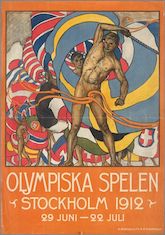 transport, the 20th century witnessed explosions both in the frequency of long-distance travel and in the volume of travel writing. While a great deal of travel took place for reasons of business, administration, diplomacy, pilgrimage, and missionary work, as in ages past, increasingly effective modes of mass transport made it possible for new kinds of travel to flourish. The most distinctive of them was mass tourism, which emerged as a major form of consumption for individuals living in the world’s wealthy societies. Tourism enabled consumers to get away from home to see the sights in Rome, take a cruise through the Caribbean, walk the Great Wall of China, visit some wineries in Bordeaux, or go on safari in Kenya. A peculiar variant of the travel account arose to meet the needs of these tourists: the guidebook, which offered advice on food, lodging, shopping, local customs, and all the sights that visitors should not miss seeing. Tourism has had a massive economic impact throughout the world, but other new forms of travel have also had considerable influence in contemporary times. Recent times have seen unprecedented waves of migration, for example, and numerous migrants have sought to record their experiences and articulate their feelings about life in foreign lands. Recent times have also seen an unprecedented development of ethnic consciousness, and many are the intellectuals and writers in diaspora who have visited the homes of their ancestors to see how much of their forebears’ values and cultural traditions they themselves have inherited. Particularly notable among their accounts are the memoirs of Malcolm X and Maya Angelou describing their visits to Africa.
transport, the 20th century witnessed explosions both in the frequency of long-distance travel and in the volume of travel writing. While a great deal of travel took place for reasons of business, administration, diplomacy, pilgrimage, and missionary work, as in ages past, increasingly effective modes of mass transport made it possible for new kinds of travel to flourish. The most distinctive of them was mass tourism, which emerged as a major form of consumption for individuals living in the world’s wealthy societies. Tourism enabled consumers to get away from home to see the sights in Rome, take a cruise through the Caribbean, walk the Great Wall of China, visit some wineries in Bordeaux, or go on safari in Kenya. A peculiar variant of the travel account arose to meet the needs of these tourists: the guidebook, which offered advice on food, lodging, shopping, local customs, and all the sights that visitors should not miss seeing. Tourism has had a massive economic impact throughout the world, but other new forms of travel have also had considerable influence in contemporary times. Recent times have seen unprecedented waves of migration, for example, and numerous migrants have sought to record their experiences and articulate their feelings about life in foreign lands. Recent times have also seen an unprecedented development of ethnic consciousness, and many are the intellectuals and writers in diaspora who have visited the homes of their ancestors to see how much of their forebears’ values and cultural traditions they themselves have inherited. Particularly notable among their accounts are the memoirs of Malcolm X and Maya Angelou describing their visits to Africa.
Recent Scholarship on Travel Accounts
Like all other historical documents, travel accounts are highly problematic sources of information. There are numerous reasons why it is impossible to accept the testimony of travel accounts at face value. Sometimes authors of travel accounts did not notice, or were not able to notice, or perhaps were not even permitted to notice certain aspects of the societies they visited. Sometimes they were sloppy or did not take the trouble to investigate carefully the societies they visited. Sometimes they felt such a deep commitment to their own societies that they tendentiously misinterpreted or misrepresented the lands they visited. Occasionally they took as their principal interest the critique of their own societies, so they exaggerated the virtues of the lands they visited. To some greater or lesser extent, all travel accounts reflect the biases, prejudices, and interests of their authors.
Considering the importance of travel accounts as historical sources, it is peculiar that scholars have devoted little attention to the analysis of travel writing. Historians have provided insightful studies of individual travelers, and literary scholars have discussed travel writing as a literary genre. Rare, however, are studies that focus on the nature of travel accounts more generally, their historical influence, their meaning as expressions of their times, and the problems they raise as historical sources.
Many studies have accepted travel accounts as documents that justified political and economic expansion. They have presented travelers themselves as intrepid explorers, often {but not always} heroic and usually {but not always} male. During the 19th and 20th centuries, when European and Euro-American peoples dominated most of the globe, many scholars viewed their traveling ancestors who struck out from home and reconnoitered the distant corners of the world as the advance agents of modernity. Eloquent testaments to this view are the hundreds of historical travel accounts published since 1846 by the Hakluyt Society of London. Richard Hakluyt himself, who published his own collections of travel accounts in the 16th century, viewed travel accounts as especially effective tools for the promotion of political and economic expansion. Many of the travel accounts published later by the society bearing Hakluyt’s name contributed to a dense web of documentation that served to legitimize a prominent European and Euro-American presence in the larger world.
political and economic expansion. They have presented travelers themselves as intrepid explorers, often {but not always} heroic and usually {but not always} male. During the 19th and 20th centuries, when European and Euro-American peoples dominated most of the globe, many scholars viewed their traveling ancestors who struck out from home and reconnoitered the distant corners of the world as the advance agents of modernity. Eloquent testaments to this view are the hundreds of historical travel accounts published since 1846 by the Hakluyt Society of London. Richard Hakluyt himself, who published his own collections of travel accounts in the 16th century, viewed travel accounts as especially effective tools for the promotion of political and economic expansion. Many of the travel accounts published later by the society bearing Hakluyt’s name contributed to a dense web of documentation that served to legitimize a prominent European and Euro-American presence in the larger world.
Recent scholarship has sometimes gone so far as to view travel accounts as works that basically reflect their authors’ interests and fears under the guise of describing foreign lands and peoples. The main source of inspiration for this line of analysis is the work of Edward W. Said, especially his powerful and controversial study, Orientalism. Said charged that European and Euro-American scholars and other experts, including travelers, had systematically misrepresented Muslim peoples and societies by characterizing them as irrational, stagnant, exotic, effeminate, and mired in tradition. This characterization derived not from objective observation, Said argued, but rather from a rhetorical tactic: European and Euro-American experts misrepresented Muslim peoples and societies in order to distinguish themselves from the foreigner and characterize themselves as rational, dynamic, masculine, and thoroughly modern. Although Said concentrated on misrepresentations of Muslim peoples in Orientalism, the book’s critical analysis suggested new ways of thinking about characterizations of African, Asian, American, and Oceanic lands in European and Euro-American travel accounts.
Orientalism helped inspire a distinctive literary analysis of travel accounts. In her book, The Witness and the Other World, for example, Mary Campbell studied medieval European travel accounts, including works by pilgrims, merchants, and explorers. She interpreted these works in light of the Crusades, European expansion in the early modern era, and European domination of the world in modern times. By her account, pilgrimage and the quest for trade directly foreshadowed crusade and conquest, so Campbell viewed medieval travelers themselves as agents of European imperialism. In her own book, Imperial Eyes: Travel Writing and Transculturation, Mary Louise Pratt offered a similar analysis of European travelers who visited Africa and South America during the 18th and 19th centuries. According to Pratt, accounts of these travelers contributed to imperialism by producing for imperialist readers a world that was ready for European domination.
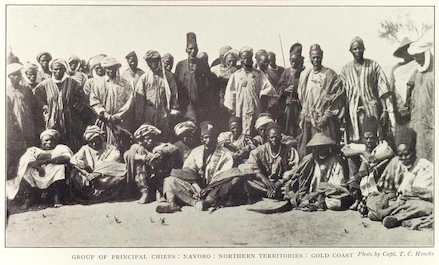
Studies by literary scholars such as Said, Campbell, and Pratt have effectively established relationships between travel accounts and imperial projects. A critic might suggest, however, that in doing so, they have reduced travel to imperialism and travel writing to imperialist propaganda. A critic might suggest further that they have focused attention so resolutely on European travel and travel writing that they have lost sight of the larger global context of travel and travel writing, which were by no means monopolies of European and Euro-American peoples. In effect, they have offered insightful but nonetheless Eurocentric analyses of European travelers.
In her book Ulysses’ Sail: An Ethnographic Odyssey of Power, Knowledge, and Geographical Distance, anthropologist Mary W. Helms offers an alternative approach, which clearly recognizes connections among travel, travel writing, and imperialism, but situates European travel accounts in larger global and thematic perspectives. Helms observes that foreign travel and knowledge acquired from distant lands have often had large cultural and political implications in travelers’ own societies. While they undoubtedly often served imperialist interests, travel experience and travel reporting also had potential to raise travelers’ status and influence in their own societies. Travel to distant parts always reflects some kind or combination of interests, be they political, social, economic, cultural, or some other kind, and indeed these interests fuel the human urge to travel in search of communication and exchange. But travel does not reduce simply to imperialism, nor travel accounts to imperialist propaganda. In Old World Encounters: Cross-Cultural Contacts and Exchanges in Pre-Modern Times, Jerry H. Bentley takes a similar approach, drawing on travel accounts to illuminate processes of cross-cultural communication and exchange in premodern times.
Who is the author of the travel account?
Is the author the traveler or a ghost writer? Travelers writing their own accounts have perhaps been able to represent their own observations and experiences better than ghost writers, but travelers have been subject to their own biases and have often sought to portray themselves in flattering light. Ghost writers have sometimes enabled travelers with limited literary skill to produce accounts of their experiences: Marco Polo and Ibn Battuta both relied heavily on the services of ghost writers. It is likely that ghost writers improved the readability of many travel accounts. Yet it is clear that they sometimes introduced their own views into travel accounts. Rustichello da Pisa, the ghost writer who composed Marco Polo’s travel account, drew on his own earlier writings to flesh out Marco’s own descriptions of his experiences.
More broadly, what is the author’s perspective? Does it make a difference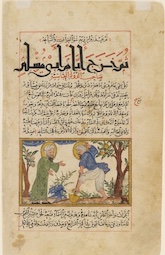 if the author is male or female? young or old? And what is the relationship between the author and the land(s) described in the travel account? Does the author possess deep understanding of the land(s) and people(s) under discussion, or only superficial acquaintance? To what extent do the author’s religious or cultural commitments shape the travel account? Answers to these questions might point in surprising directions, but in combination they contribute to the evaluation of travel accounts. As an example, consider the case of the 11th-century astronomer al-Biruni, a native of Iran who spent about 10 years in India as an official at the court of a Turkish conqueror. During his extended visit, al-Biruni became deeply familiar with Indian society and cultural traditions. He found much to admire in Indian science, mathematics, and philosophy, but as a devout Muslim he despised Hinduism and Indian customs that violated Islamic law and practice. Thus al-Biruni’s travel account reveals as much about the author himself as it does about the land and people he visited.
if the author is male or female? young or old? And what is the relationship between the author and the land(s) described in the travel account? Does the author possess deep understanding of the land(s) and people(s) under discussion, or only superficial acquaintance? To what extent do the author’s religious or cultural commitments shape the travel account? Answers to these questions might point in surprising directions, but in combination they contribute to the evaluation of travel accounts. As an example, consider the case of the 11th-century astronomer al-Biruni, a native of Iran who spent about 10 years in India as an official at the court of a Turkish conqueror. During his extended visit, al-Biruni became deeply familiar with Indian society and cultural traditions. He found much to admire in Indian science, mathematics, and philosophy, but as a devout Muslim he despised Hinduism and Indian customs that violated Islamic law and practice. Thus al-Biruni’s travel account reveals as much about the author himself as it does about the land and people he visited.
What kinds of interests motivated the traveler and the author of the travel account?
Rarely have individuals ventured into the larger world out of sheer, disinterested curiosity. Over the long run of history, three interests in particular—empire, business, and mission—have accounted for a great deal of foreign travel and attention that individuals have devoted to lands beyond their own societies. In other words, individuals have gone to great lengths to explore and study the larger world because they sought knowledge that would enable them to maintain control over subject lands and peoples, or because they sought knowledge of lands, peoples, and resources that would help them establish profitable trade and business relations, or because they sought understanding of foreign cultural and religious traditions in order to combat them or co-opt them. Empire, business, and mission are not the only reasons why individuals have developed interests in the larger world: particularly in recent times, personal, familial, and cultural interests have also figured prominently as motives for visiting and understanding the larger world. In any case, scholarship on travel accounts would do well to devote particular attention to the motives behind travelers’ ventures into the larger world.

To mention a few examples: (1) Zhang Qian, the Chinese envoy who trekked through central Asia in the first century BCE, traveled as a representative of the emperor Han Wudi. The emperor sought allies to aid in his campaigns against the nomadic Xiongnu people. Zhang Qian did not find allies, but he brought back considerable intelligence about Xiongnu society, including its political and military organization. His travel account clearly reflected the imperial interests of the Han dynasty. (2) When Marco Polo traveled through central Asia and China, he reported fully on the textiles, gems, minerals, foodstuffs, natural resources, and manufactured goods that were available in the cities and territories he visited. No surprise that the travel account by this son of a merchant would reflect the interests of a businessman. (3) The Spanish Franciscan Bernardino de Sahagún went to Mexico in 1529 to convert the recently conquered native peoples to Christianity. Sahagún mastered the Nahuatl language, elicited information about native customs, and recorded the history and literature of local peoples. He paid close and respectful attention to his informants, but cross-cultural understanding was always a tool serving the needs of mission for Sahagún. His writings are the most important textual sources on native society in Mexico, but they would never have appeared except for Sahagún’s missionary efforts.
What form does the travel account take?
Authors of travel accounts have reported their observations and experiences in many different forms, and the author’s choice of form has sometimes influenced the character of the account. Often, of course, authors have made their travel and sojourn in distant lands the principal focus of works taking the form of a travel account proper. Notable examples of this approach are the travel accounts of Xuanzang, Marco Polo, and Ibn Battuta, all of whom intended to relate the things they saw and experienced in foreign lands.
Yet travel accounts have appeared also in other guises. Many have taken the form of contemporary historical accounts: Herodotus wove travel reports into his history, The Persian Wars, while Zhang Qian’s account of his travels among the Xiongnu appeared in the official history of the Han dynasty by the Chinese historian Sima Qian, and Bernal Díaz del Castillo’s True History of the Conquest of New Spain was as much a travel account as a record of a military campaign. Travel accounts also have figured prominently in logs, journals, memoirs, official correspondence, private letters, and diaries. Christopher Columbus included a great deal of travel reportage in the log of his first voyage to the Western Hemisphere (which itself survives only in a later historical account composed by the Spanish missionary Bartolomé de las Casas), while Edgar Snow’s Red Star over China was as much travel account as it was a personal memoir and political tract. In the cases of these works, reports on foreign lands and peoples sometimes represent discussions that are secondary to the authors’ principal concerns. Reflections of travel experiences have occurred also in oral traditions, such as Icelandic sagas recounting Norse voyages to Greenland and North America, orally transmitted accounts of Sundiata, the 13th-century founder of the Mali empire, and the numerous oral traditions of Polynesians and other Pacific islanders who recalled their migrations and other overseas ventures in stories passed down from one generation to another.
Indeed, travel accounts have been so popular with readers through the ages that many writers have adapted the genre of the travel account in presenting works of fiction. Homer’s Odyssey, the stories of Sindbad in the Arabian Nights, Thomas More’s Utopia, the picaresque novel Monkey by the Chinese writer Wu Cheng’en, Daniel Defoe’s Robinson Crusoe, the Baron de Montesquieu’s Persian Letters, Jonathan Swift’s Gulliver’s Travels, Samuel Johnson’s Rasselas, Voltaire’s Candide, Samuel Butler’s Erewhon, and Italo Calvino’s Invisible Cities are only a few fictional works that either take the form of travel accounts or draw upon features of the genre in communicating their authors’ visions of their own worlds.
A somewhat different kind of fictional travel account involves forgery. In several notable cases, writers have prepared fictional travel accounts, often based on considerable research, that they have then attributed to real travelers. The best known and perhaps most widely read example of the forged travel account is the 14th-century work known as Sir John Mandeville’s Travels. By no means is the forged travel account an extinct literary form. Recently, British and U.S. publishers presented a book entitled The City of Light that purports to record the travel experiences of a 13th-century Jewish Italian merchant named Jacob d’Ancona. Because the work includes numerous historical howlers, however, and because the work’s supposed discoverer, editor, and translator has refused to allow others access to the work itself, most scholars regard The City of Light as a recent forgery.
What topics does the author find it worthwhile to discuss?
The topics that authors discuss offer insights into their interests. Those whose principal interest is conquest or control of a foreign land have often focused on the strengths and weaknesses of the societies they visited: their political structure, military capacity, social organization, economic productivity, and the like. Those with a particular interest in commerce or business opportunities have often paid special attention to the natural resources and manufactured products of foreign lands, as well as social and cultural customs that would be useful for merchants and businessmen to know about. Those seeking converts to a new religious faith have often concentrated on native cultural traditions, religious beliefs, educational institutions, and moral practices. Contrariwise, authors of travel accounts have sometimes been blind to those aspects of a foreign society that hold little interest for them. In hundreds of pilgrims’ travel accounts recording the experiences of Christians visiting Jerusalem or Muslims making a hajj to Mecca, the authors dwelled almost exclusively on religious and spiritual issues, barely noticing the material world that they traversed. Similarly, merchants doing business in foreign lands often found it difficult or uninteresting to explore local cultural values or family life. The Chinese merchant Zhou Daguan, for example, visited Cambodia in the 13th-century. In a brief report on his sojourn there, he pointed out that it was convenient and immensely helpful for Chinese merchants to take a local wife who was familiar with local business practices, but he manifested little interest in the private life of Cambodian society itself.
What influence has the travel account had during its own and later times?
Some travel accounts have deeply influenced historical developments in their own or later times. Sir John Mandeville’s fictitious Travels and Marco Polo’s account of his own travels both inspired European peoples to venture beyond their own borders in search of wealth and commercial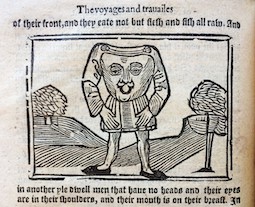 opportunities abroad. Christopher Columbus was quite familiar with both Mandeville’s and Polo’s works, as well as other travel accounts and geographical writings. Of course, later interpreters have made dramatically different uses of Mandeville and Polo, and indeed of Christopher Columbus himself, as they have sought to understand the past from fresh perspectives. While Columbus took Marco Polo as a guide to Asian lands and markets, for example, the Hungarian-British traveler and archaeologist Sir Aurel Stein read him closely to identify archaeological remains and find clues to the locations of abandoned sites along the central Asian silk roads.
opportunities abroad. Christopher Columbus was quite familiar with both Mandeville’s and Polo’s works, as well as other travel accounts and geographical writings. Of course, later interpreters have made dramatically different uses of Mandeville and Polo, and indeed of Christopher Columbus himself, as they have sought to understand the past from fresh perspectives. While Columbus took Marco Polo as a guide to Asian lands and markets, for example, the Hungarian-British traveler and archaeologist Sir Aurel Stein read him closely to identify archaeological remains and find clues to the locations of abandoned sites along the central Asian silk roads.
Despite the popularity of the genre, some important travel accounts had little immediate influence, sometimes because they did not come to light until long after their composition, even though they offer useful insights into the societies they discuss. Beyond the circles of Muslim scholars in north Africa, for example, Ibn Battuta’s travel account received little attention until the 19th century, but more recently historians have found that it offers an unparalleled perspective on the 14th-century Muslim world from West Africa to India and beyond.
Primary Sources
Sample Analysis
The following selections come from the True History of the Conquest of New Spain by Bernal Díaz del Castillo (1492-1580), who was a foot soldier in the army of Hernán Cortés that conquered the Aztec empire in the period 1519 to 1522. Bernal Díaz composed his account in the 1560s, decades after the events he described, yet he wrote with supreme confidence in his ability to recall details from an earlier time.
Bernal Díaz had a purpose in mind for his work: he sought to set the record straight by responding to the works of contemporary historians who wrote in a more polished style but had no knowledge of the campaign in New Spain (Mexico). The historian Francisco López de Gómara had attributed the campaign’s success entirely to the leadership of Cortés, while the missionary Bartolomé de las Casas had attacked the Spanish forces for excessive cruelty. Bernal Díaz admired Cortés and often praised him in his own account, but he insisted that the campaign’s success was the result of a joint effort of all troops from the commander to the lowliest foot soldier. As for charges of excessive cruelty, Bernal Díaz scorned them and accounted for the campaign’s brutality as the inevitable result of war and the treacherous situations the Spanish forces faced.
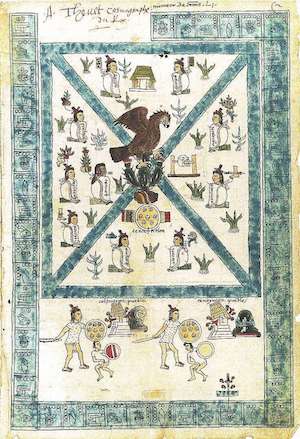
Bernal Díaz’s perspective on the conquest of Mexico differed not only from those of contemporary historians but also from the story related by the commander Hernán Cortés himself. Although he did not prepare a formal historical account, Cortés dispatched a series of five lengthy epistles to the king of Spain. In these letters, composed between 1519 and 1526, Cortés recounted his army’s experiences and explained his decisions in such a way as to justify his actions as commander. From a strictly legal point of view, Cortés was a rebel, or at best an insubordinate adventurer, so he argued tenaciously that his actions enhanced the king’s power, wealth, and glory. Cortés emphasized that he had conquered a vast empire for the king and provided him with new sources of wealth. Moreover, he offered a convenient justification for the conquest of Mexico: since the native peoples observed degrading customs, including human sacrifice, it was essential to conquer them and convert them to Christianity. Thus Cortés’s characterization of native peoples played a pivotal role in his effort to justify his own actions to the king of Spain.
While military affairs were the focus of Bernal Díaz’s account, he also devoted ample attention to the peoples and customs he encountered during the course of the campaign. The following passages bespeak his wonder at some dimensions of Aztec society and his horror at others. Quotations are from Bernal Díaz, The Conquest of New Spain, trans. by J. M. Cohen (Harmondsworth: Penguin, 1963), pp. 148-49, 214-15, 236-37.
The first passage offers insight into the nature of conflict as Cortés’s army made its way through Mexico:
What an opportunity for fine writing the events of this most perilous and uncertain battle present! We were four hundred, of whom many were sick and wounded, and we stood in the middle of a plain six miles long, and perhaps as broad, swarming with Indian warriors. Moreover we knew that they had come determined to leave none of us alive except those who were to be sacrificed to their idols. When they began to charge the stones sped like hail from their slings, and their barbed and fire-hardened darts fell like corn on the threshing-floor, each one capable of piercing any armour or penetrating the unprotected vitals. Their swordsmen and spearmen pressed us hard, and closed with us bravely, shouting and yelling as they came. The steadfastness of our artillery, musketeers, and bowmen did much to save us, and we inflicted great casualties on them. Their charging swordsmen were repelled by stout thrusts from our swords, and did not close in on us often as in the previous battle. Our horsemen were skillful and fought so valiantly that, after God who protected us, they were our chief bulwark.... The Indians were charging us in such numbers that only by a miracle of sword-play were we able to drive them back and re-form our ranks. One thing alone saved our lives: the enemy were so massed and so numerous that every shot wrought havoc among them. What is more, they were so badly led that some of their captains could not bring their men into battle.
Comment: Throughout his work, Bernal Díaz manifested great respect for the warriors who challenged Cortés’s army during its march through Mexico. He commented on their light but effective cotton armor as well as their weapons, including slings, darts, arrows, and obsidian swords with lethal cutting edges. He often mentioned their strength, bravery, courage, and cleverness in devising tactics to exploit weaknesses of the invading force, although he occasionally pointed out that Mexican armies did not fight in highly disciplined fashion. His account also makes it clear that steel swords, crossbows, firearms, cannons, and horses provided the Spanish army with powerful tools for battle. Quite apart from their advanced weaponry, military discipline enabled Cortés’s army to survive clashes with much larger opposing forces. Bernal Díaz often mentioned that the Spanish forces fought to keep their ranks in good order, and so long as they did so, their opponents made little headway against them. Indeed, Bernal Díaz’s account sheds considerable light on military organization of both Spanish and Mexican societies.
The next passage describes what Bernal Díaz and his fellow soldiers beheld as they approached and entered the Aztec capital of Tenochtitlán:
And when we saw all those cities and villages built in the water, and other great towns on dry land, and that straight and level causeway leading to Mexico [i.e. Tenochtitlán], we were astounded. These great towns and cues [i.e., temples] and buildings rising from the water, all made of stone, seemed like an enchanted vision from the tale of Amadis. Indeed, some of our soldiers asked whether it was not all a dream. It is not surprising therefore that I should write in this vein. It was all so wonderful that I do not know how to describe this first glimpse of things never heard of, seen or dreamed of before. . . .
And when we entered the city of Iztapalapa, the sight of the palaces in which they lodged us! They were very spacious and well built, of magnificent stone, cedar wood, and the wood of other sweet-smelling trees, with great rooms and courts, which were a wonderful sight, and all covered with awnings of woven cotton.
When we had taken a good look at all this, we went to the orchard and garden, which was a marvelous place both to see and walk in. I was never tired of noticing the diversity of trees and the various scents given off by each, and the paths choked with roses and other flowers, and the many local fruit-trees and rose-bushes, and the pond of fresh water. Then there were birds of many breeds and varieties which came to the pond. I say again that I stood looking at it, and thought that no land like it would ever be discovered in the whole world.... But today all that I then saw is overthrown and destroyed; nothing is left standing.
Comment: Spanish forces entered Tenochtitlán after almost nine months of traveling and fighting their way from Veracruz on the Gulf coast across rugged terrain to central Mexico. They fought numerous skirmishes and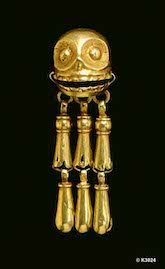 several major battles along the way. Their small band of only a few hundred soldiers faced enemy forces with thousands of warriors. Nevertheless, through iron discipline and astonishingly clever diplomacy, most of Cortés’s army survived to see the Aztec capital. After months of continuous danger and deprivation, it is hardly surprising that Bernal Díaz and his fellow soldiers reacted to the comforts of Tenochtitlán as they did. From his almost lyrical descriptions of Tenochtitlán, it is clear that Bernal Díaz had high respect for Aztec political and social organization, for the skills and talents of Aztec workers and craftsmen, for the remarkable city that stood on pilings and built-up land in the middle of Lake Texcoco. Bernal Díaz described the vast palaces of the Aztec emperor, with its armory, gardens, aviary, and chapels. He also took his readers on an extended tour through the vast markets of Tenochtitlán, describing the foods, fine textiles, jewels, precious metals, chocolate, paper, tobacco, human slaves, and other goods on offer there. Indeed, his account provides perhaps the best description of Aztec society on the eve of the Spanish conquest of Mexico.
several major battles along the way. Their small band of only a few hundred soldiers faced enemy forces with thousands of warriors. Nevertheless, through iron discipline and astonishingly clever diplomacy, most of Cortés’s army survived to see the Aztec capital. After months of continuous danger and deprivation, it is hardly surprising that Bernal Díaz and his fellow soldiers reacted to the comforts of Tenochtitlán as they did. From his almost lyrical descriptions of Tenochtitlán, it is clear that Bernal Díaz had high respect for Aztec political and social organization, for the skills and talents of Aztec workers and craftsmen, for the remarkable city that stood on pilings and built-up land in the middle of Lake Texcoco. Bernal Díaz described the vast palaces of the Aztec emperor, with its armory, gardens, aviary, and chapels. He also took his readers on an extended tour through the vast markets of Tenochtitlán, describing the foods, fine textiles, jewels, precious metals, chocolate, paper, tobacco, human slaves, and other goods on offer there. Indeed, his account provides perhaps the best description of Aztec society on the eve of the Spanish conquest of Mexico.
The last passage describes images of Aztec gods and shrines holding the remains of sacrificial victims that Bernal Díaz and his fellow soldiers saw in the great temple at Tenochtitlán:
On each altar was a giant figure, very tall and very fat. They said that the one on the right was Huichilobos [i.e. Huitzilopochtli], their war-god. He had a very broad face and huge terrible eyes. And there were so many precious stones, so much gold, so many pearls and seed-pearls stuck to him with a paste which the natives made from a sort of root, that his body and head were covered with them. . . .
There were some smoking braziers of their incense, which they call copal, in which they were burning the hearts of three Indians whom they had sacrificed that day; and all the walls of that shrine were so splashed and caked with blood that they and the floor too were black. Indeed, the whole place stank abominably. We then looked to the left and saw another great image of the same height as Huichilobos, with a face like a bear and eyes that glittered, being made of their mirror-glass, which they call tezcat. Its body, like that of Huichilobos, was encrusted with precious stones, for they said that the two were brothers. This Tezcatlipoca, the god of hell, had charge of the Mexicans’ souls, and his body was surrounded by figures of little devils with snakes’ tails. The walls of this shrine also were so caked with blood and the floor so bathed in it that the stench was worse than that of any slaughter-house in Spain. They had offered that idol five hearts from the day’s sacrifices.
At the very top of the cue [temple] there was another alcove, the woodwork of which was very finely carved, and here there was another image, half man and half lizard, encrusted with precious stones, with half its body covered in a cloak. Here too all was covered with blood, both walls and altar, and the stench was such that we could hardly wait to get out. They kept a large drum there, and when they beat it the sound was most dismal, like some music from the infernal regions, as you might say, and it could be heard six miles away. In that small platform were many more diabolical objects, trumpets great and small, and large knives, and many hearts that had been burnt with incense before their idols; and everything was caked with blood. The stench here too was like a slaughter-house, and we could scarcely stay in the place.
Comment: Archaeological excavations have borne out much of Bernal Díaz’s descriptions of Aztec temples and sacrificial ceremonies. There is no doubt that human sacrifice played a large role in Aztec society. Yet the very prominence of human sacrifice might have provoked reflective individuals to ask why such extreme and costly customs loomed so large in Aztec society? Bernal Díaz was a practical man—a foot soldier and conqueror rather than a historian or anthropologist—and he never seems to have probed deeply into the cultural logic of the Aztec’s sacrifices of human victims. For Bernal Díaz, a conventional—if not particularly pious—Roman Catholic Christian of the early 16th-century, it was sufficient to recognize that Aztec customs profoundly violated his own faith. Some commentators, including Hernán Cortés and other contemporary historians, argued specifically that Aztec religious practices constituted justification for the Spanish conquest of Mexico. Bernal Díaz certainly portrayed himself as one working to serve God, but he felt little need to rationalize conquest by emphasizing the brutality of human sacrifice. Nevertheless, his eyewitness portrayals of human sacrifices and his graphic descriptions of blood-drenched shrines contributed to the characterization of Aztec society as one ripe for conquest and conversion to Christianity.
Bibliography
Adas, Michael P. Machines as the Measure of Men: Science, Technology, and Ideologies of Western Dominance. Ithaca: Cornell University Press, 1989.
Draws on travel accounts in reconstructing European views of other societies in the age of imperialism.
Bentley, Jerry H. Old World Encounters: Cross-Cultural Contacts and Exchanges in Pre-Modern Times. New York: Oxford University Press, 1993.
Considers numerous travel accounts in studying processes of cross-cultural interaction before 1500 CE.
Bridges, R.C., and P.E.H. Hair, eds.Compassing the Vast Globe of the Earth: Studies in the History of the Hakluyt Society 1846-1996. London: Hakluyt Society, 1996.
Fascinating collection of scholarly essays exploring the legacy of the Hakluyt Society after 150 years.
Campbell, Mary B. The Witness and the Other World: Exotic European Travel Writing, 400-1600. Ithaca: Cornell University Press, 1988.
Deals with medieval European travel writers, interpreting them as advance agents of imperialism.
Dunn, Ross E. The Adventures of Ibn Battuta: A Muslim Traveler of the Fourteenth Century. Berkeley: University of California Press, 1986.
Excellent account of Ibn Battuta’s life and travels throughout much of the eastern hemisphere.
Helms, Mary W. Ulysses’ Sail: An Ethnographic Odyssey of Power, Knowledge, and Geographical Distance. Princeton: Princeton University Press, 1988.
Fascinating study exploring the cultural and political implications of long-distance travel.
Larner, John. Marco Polo and the Discovery of the World. New Haven: Yale University Press, 1999.
Takes recent scholarship into account in studying the experiences of the most famous traveler of medieval Europe.
Marshall, P.J. and Glyndwyr Williams. The Great Map of Mankind: Perceptions of New Worlds in the Age of Enlightenment. Cambridge, MA: Harvard University Press, 1982.
Shows how European travelers contributed to perceptions of African, American, and Asian societies as inferior to their own.
Pagden, Anthony. European Encounters with the New World: From Renaissance to Romanticism. New Haven: Yale University Press, 1993.
Draws on numerous travel accounts in studying European efforts to comprehend American lands and peoples.
Pratt, Mary Louise. Imperial Eyes: Travel Writing and Transculturation. London: Routledge, 1992.
Argues that European travel writing about Africa and South America promoted European political and economic expansion.
Said, Edward W. Orientalism. New York: Pantheon Books, 1978.
Powerful, provocative, and influential work attacking European and Euro-American representations of Muslim peoples and societies.
Wriggins, Sally Hovey. Xuanzang: A Buddhist Pilgrim on the Silk Road. Boulder: Westview Press, 1996.
Synthesizes studies on the most famous Chinese Buddhist pilgrim and discusses his experiences in light of other Chinese pilgrims.
Credits
Jerry H. Bentley is professor of history at the University of Hawaii and editor of the Journal of World History. His research on the religious, moral, and political writings of Renaissance humanists led to the publication of Humanists and Holy Writ: New Testament Scholarship in the Renaissance (Princeton, 1983) and Politics and Culture in Renaissance Naples (Princeton, 1987). More recently, his research has concentrated on global history and particularly on processes of cross-cultural interaction. His book Old World Encounters: Cross-Cultural Contacts and Exchanges in Pre-Modern Times (New York, 1993) examines processes of cultural exchange and religious conversion before the modern era, and his pamphlet Shapes of World History in Twentieth-Century Scholarship (Washington, D.C., 1996) discusses the historiography of world history. His current interests include processes of cross-cultural interaction and cultural exchanges in modern times.
